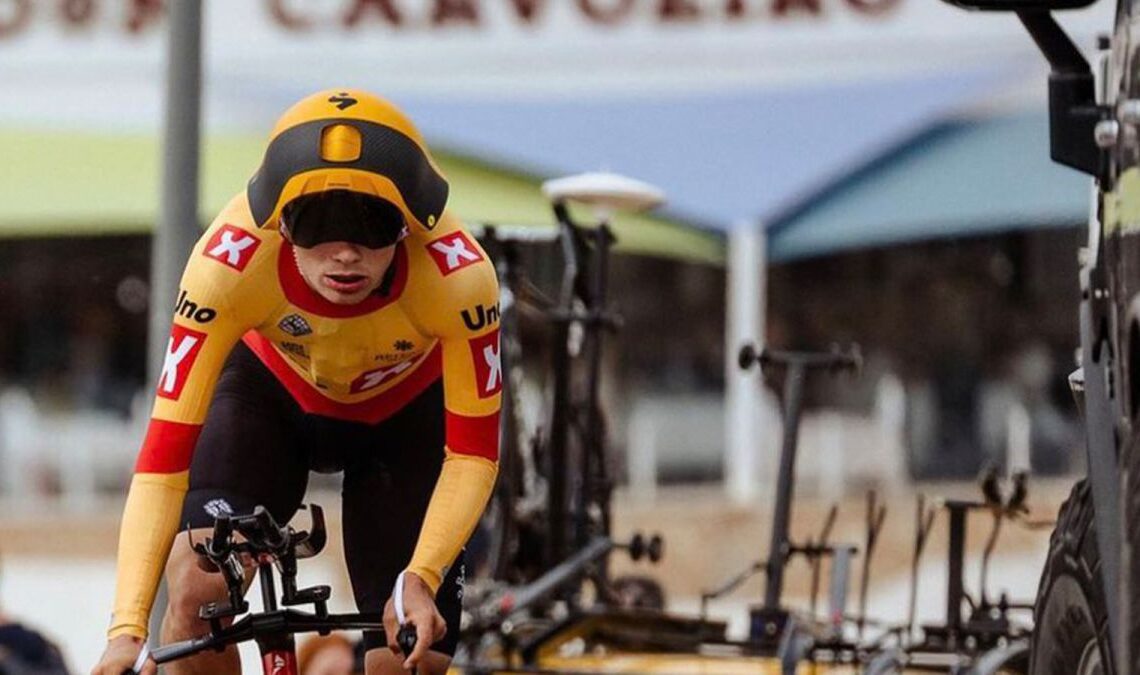The Volto ao Algarve isn’t necessarily the biggest race of the year but the final time trial of the race was the backdrop for some new, unreleased TT tech, in the form of a pretty radical new helmet from Uno-X Pro Cycling Team sponsor Sweet Protection.
There has definitely been a trend in recent years for some groundbreaking (and visually arresting) helmets, especially for the time trial. Weird helmets took over the Tour de France last year, with some enormous options from Kask, and a Specialized model with an integrated head-sock. This new model, seen atop Alexander Kristoff and his teammates would definitely fit in with the new kids on the block.
As it is currently unreleased we cannot say much for sure, but the general form is very similar to that of the old POC Tempor helmet which was perhaps most famously, or infamously, seen in use by the Danish team pursuit squad during their altercation with Team GB at the Tokyo Olympics. The flared edges, we presume, are designed to smooth the airflow around the rider’s shoulders.
The carcass of the helmet seems to have a number of internal air channels built in. Two large vents above the front visor are assumed to be there to cool the face and also reduce the fogging of the visor by enduring airflow over the inside of the lens.
The stand-out feature, at the front of the main body of the helmet, is a large central vent. Within this, in the void, is a splitter running vertically that looks to split the direct airflow into two channels running either side of the head behind a carbon, or carbon effect shroud. Sweet Protection has a history of using actual carbon fibre in its snowsports helmets, so it’s not unreasonable to suspect it’s the former. Whether this split vent is for aerodynamics or cooling it’s impossible to say at this stage, so let’s assume it’s the latter for now.
MIPS is approaching ubiquity at the pinnacle of head protection for cyclists, and so it’s no surprise to see this model sporting a yellow sticker denoting it has rotational impact protection built in.
Cyclingnews understands the helmet, its model name we’re unsure of, has been developed in conjunction with the Uno-X team and technical staff for at least the past 12 months, and that the team is trialling the use of various new aerodynamic advancements ahead of its debut at the Tour de France in July.
Click Here to Read the Full Original Article at CyclingNews RSS Feed…

